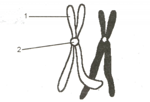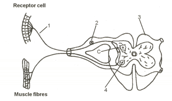Ajay Kumar Bhattacharya and Pradeep Singh Solutions for Exercise 1: SELF PRACTICE MODEL TEST PAPERS
Ajay Kumar Bhattacharya Biology Solutions for Exercise - Ajay Kumar Bhattacharya and Pradeep Singh Solutions for Exercise 1: SELF PRACTICE MODEL TEST PAPERS
Attempt the practice questions from Exercise 1: SELF PRACTICE MODEL TEST PAPERS with hints and solutions to strengthen your understanding. ICSE Self - Study in Biology solutions are prepared by Experienced Embibe Experts.
Questions from Ajay Kumar Bhattacharya and Pradeep Singh Solutions for Exercise 1: SELF PRACTICE MODEL TEST PAPERS with Hints & Solutions
Name the term which refers to the relative concentrations of solutes of two solutions.
Menstruation is the stage of maturity when an individual develops secondary sexual characters and is capable of sexual reproduction.
Given below in the box are a set of 16 biological terms. Of these twelve can be paired into 6 matching pairs. Of the six pairs one has been done for you as an example. Write about the remaining five matching pairs made by you as 1 to 5 in your answer sheet.
Astigmatism, Parturition, Bilirubin, Acetylcholine, Uric acid, recessive, Cylindrical lens, Neurotransmitter, Curly hair, Acrosome, Gout, Convex lens, Childbirth, Dominant, bile pigment, Calcium oxalate.
Example : Parturition — Childbirth.
You are given four alternative terms in each of the following. Select and write the term that does not fit the description. An example answer is done for you. Example: Animal cell — {Nucleus, centrosome, plastid, plasma membrane}.
Answer: Plastid
Antitranspirants — {Silicon oil, starch, phenyl mercuric acetate, abscisic acid}.
You are given four alternative terms in each of the following. Select and write the term that does not fit the description. An example answer is done for you. Example: Animal cell — {Nucleus, centrosome, plastid, plasma membrane}.
Meninges.
The diagram shows a schematic representation of the start of a certain phenomenon in cell division.

Name the type of cell division in which the phenomenon occurs.
The following diagram shows the internal structure of the spinal cord, depicting a simple reflex. Study the same and then answer the questions that follow:

Using arrows in the diagram indicate the direction in which an impulse enters and leaves the spinal cord.
How does the arrangement of nerve cells in the spinal cord differ from that in the brain?
